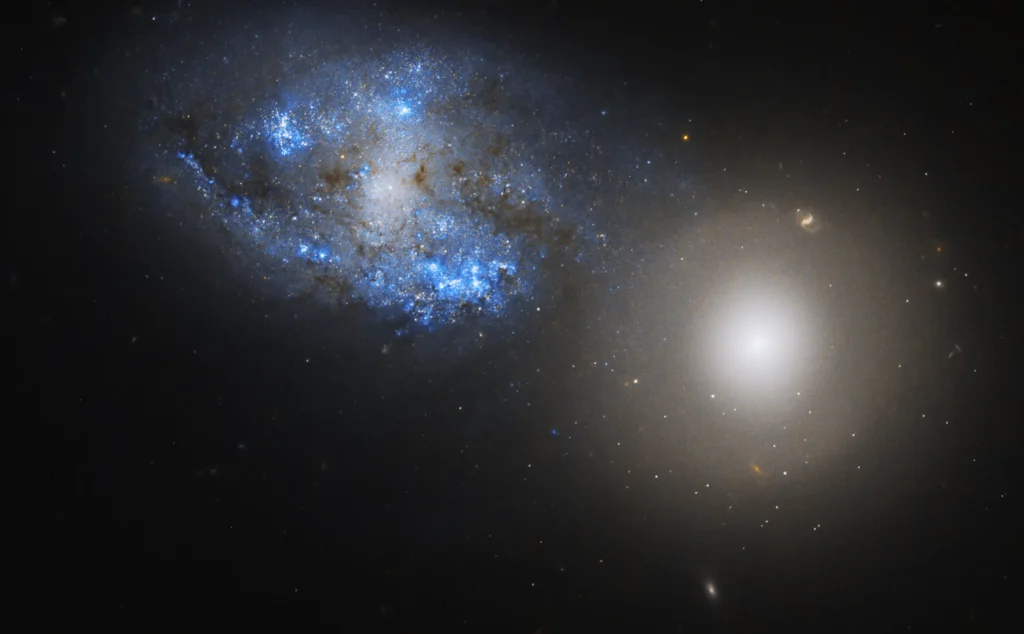Experts from the Goddard Space Center published a video showing a photo of the Hubble telescope turned into music. It captured a pair of interacting Arp 140 galaxies.
To turn photos of two galaxies into music, scientists assigned pitch to the color of the image (blue is higher, red is lower). Pitch also correlates with the brightness of stars and background galaxies, depending on their apparent size. Objects that appear larger have a lower tone level, while smaller ones have a higher tone level. A brighter light sounds louder throughout the image.
Interacting galaxies
Arp 140 is located at a distance of about 80 million light-years from Earth in the direction of the constellation Cetus. The pair consists of a lenticular galaxy NGC 274 (right part of the image) and a spiral galaxy with a bar NGC 275 (left part of the image).

These two types of galaxies have completely different structures. NGC 275 has spiral arms that come out of a bar located in the center, an elongated luminous formation consisting of gas and stars. Astronomers figuratively compare them to transport arteries through which matter from the galactic outskirts enters the center, where it then becomes a building material for new luminaries or is absorbed by a supermassive black hole. According to current estimates, about two thirds of all spiral galaxies have bars. Our Milky Way is also one of them.
Lenticular galaxies like NGC 274 represent a transitional link between spiral and elliptical galaxies. The spiral structure is no longer visible in them, but they still retain the shape of a disk and a distinguishable core. At the same time, such objects contain little gas and dust and consist mainly of old stars.
Follow us on Twitter to get the most interesting space news in time
https://twitter.com/ust_magazine


